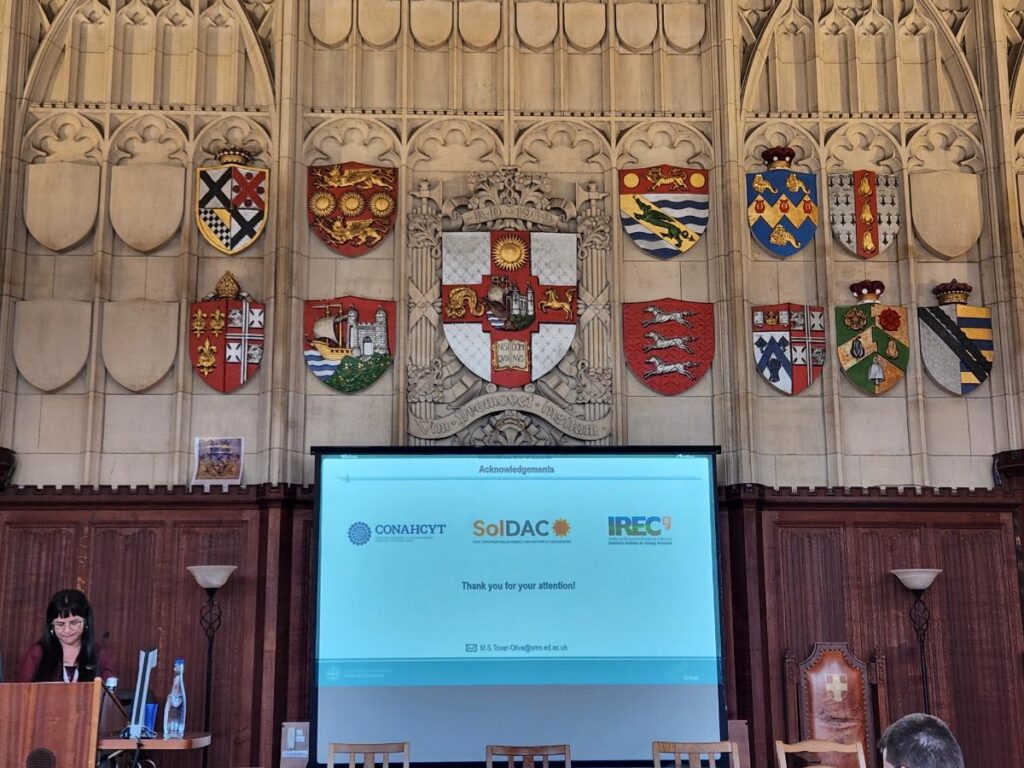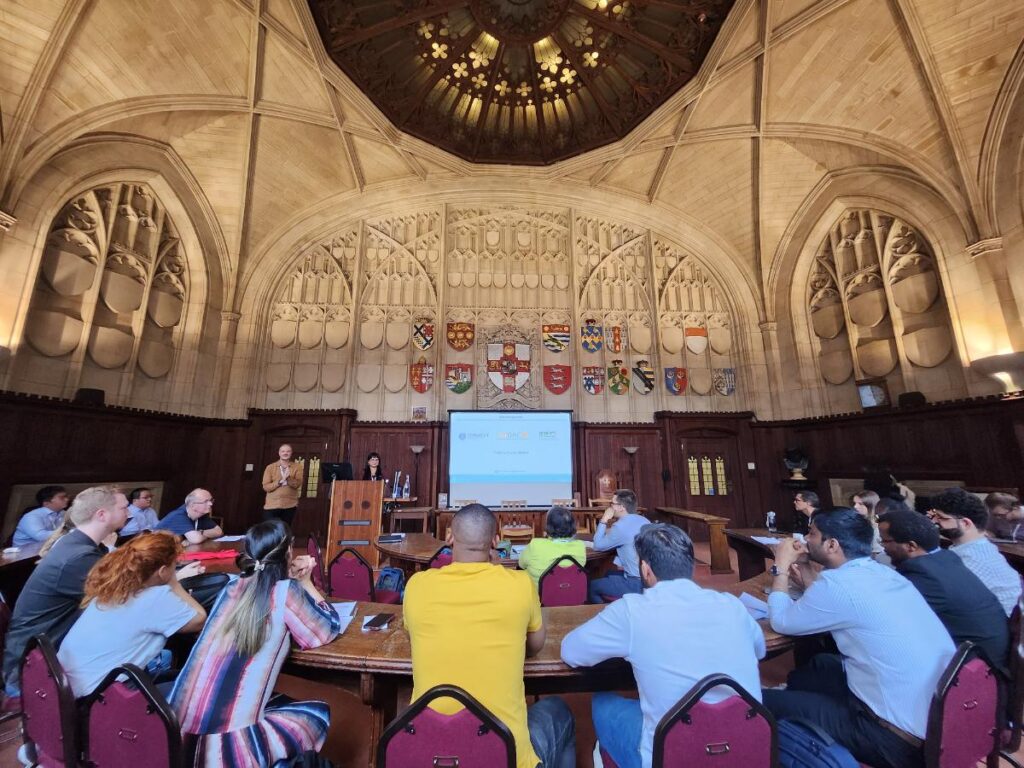The development of catalysts with excellent selectivity, stability and activity toward multicarbon products for the electrochemical reduction of CO2 (CO2RR) has been a topic of extensive research due to its crucial role in sustainable CO2 utilisation. Such features depend on the composition and morphology of the catalyst, which are also dependent on the synthesis methodology.
Every year, the Royal Society of Chemistry organises the Electrochem Conference as a platform for early researchers to share their work. This year, the University of Bristol hosted the event, from September 10th to 12th and The Edinburgh Electrochemical Engineering Group (e3 group), led by Dr Ignacio Tudela-Montes, presented their work related to the development of an in-situ fabrication method for the electrochemical synthesis of Cu-based catalyst deposited onto a carbon-based Gas Diffusion Layer.
Two members of the University of Edinburgh involved in the SolDAC project presented their abstracts during the Electrochem Conference.
Mayra Tovar-Oliva gave the talk “Optimised Electrodeposition Technique for in-situ Fabrication of Cu-based Catalysts on Gas Diffusion Layers for Electrochemical CO2 Reduction” and Luis Navarro presented the “Electrodeposition of Cu-based bimetallic catalyst over Gas Diffusion Layer (GDL) for the electrochemical conversion of CO2.”
In both presentations, SEM and EDx characterisation confirms the production of uniformly distributed electrocatalysts with different Metal-Metal plating ratios. Also, early results about the performance of the Cu and CuAg catalysts on a flow electrolyser, demonstrate the feasibility of using them on CO2RR at a bigger scale, confirming that the e3 group synthesis method provides a promising scalable route to solve the mass production of GDE, a significant issue in carbon valorisation.

